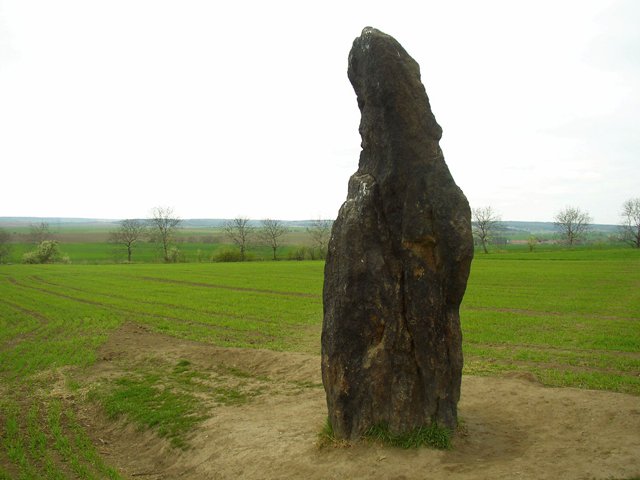A FEW WORDS ABOUT MENHIRS

Kamenný pastýř - je velmi zachovalý menhir nacházející se v České republice poblíž obce Klobuky.
The stone shepherd – is a well-preserved menhir situated near the village of Klobuky, the Czech Republic.
Terms such as dolmens and cromlechs are known to our readers. If you are unable to reach our previous articles about megalithic monuments, we do recommend you make up for it as soon as possible. Meanwhile, we are presenting you with the last article of our miniseries about menhirs.
Menhirs are structurally the simplest megalithic monuments.
In the Breton language “menhir“ stands for “a large stone“. Generally, this term is used for describing a vertical block of stone that is sharp or narrow towards its peak. Menhirs differ from others in their size. The biggest ones can be up to 20 meters tall and they can weigh over 300 tons. It is not necessary to add that scientists have been stirring up a debate about laying and moving such gigantic blocks of stone back in times before Christ and that this has remained a mystery of modern archaeology.
The largest number of menhirs can be found on the British Isles and in Northern France. Nowadays, their numbers reach approx. 10,000 in these regions. It is estimated that in the past their numbers were several times higher, but most of them were destroyed. Menhirs can be found in Asia, Africa, and South America also, however, their numbers are less numerous than in Northern Europe.
There are many theories about the role of menhirs. They can serve as places for worshipping of gods where druids sacrificed chosen ones and/or religious rites. They can also serve as territorial marks or a type of an ancient calendar. Many of them are still engraved with symbols such as axes, ploughs, and staffs. Regarding other megalithic monuments, unfortunately, there are not sufficient number of sources to confirm how and for what reason they were erected.
In the Middle Ages, it was believed that menhirs were built by giants who inhabited the Earth before the Great Flood.
In the UK– in Devon – there is a small town called South Zeal. In its centre Oxenham Arms – a cosy hotel can be found there. In its interior, there is a menhir coming from 5,000 BC. How is that possible?

Carnac
Menhirs were not placed separately but in whole formations. One of the largest concentrations of menhirs can be found in Carnac Northern France. There are three large clusters of menhirs (Ménec, Kermario and Kerlescan) organized into converging lines. Each of these lines is 1 kilometer long and several hundred meters wide. Their age is estimated at 4,500 years. One of the local legends tells that Merlin turned a Roman legion into stone by a magic spell. Therefore, the menhirs stand in linear lines in such large numbers. According to different versions pope Cornelius was the man who let the Roman legion be turned into stone because he was pursued by them. All in all, the foundation of organized menhirs is still unknown to us.

An interesting formation of menhirs can be found in Scandinavia in the lands inhabited by Vikings a long time ago. In the late Bronze Age, surrounding burial sites with menhirs organized into a shape of a ship was a very common practice. The largest formation of this type was a stone ship in Jelling (170 meters long) which has not survived to this day.
Source: Kurier Kamieniarski
Author: Jakub Zdańkowski | Published: 20 December 2016
